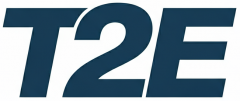Navigating a multi-cloud environment presents significant challenges for tech executives, particularly in managing data across various providers. This complex landscape requires integrated and synchronize data storage, security protocols, and applications seamlessly across different cloud infrastructures. Companies often adopt this strategy to leverage cost efficiencies and performance benefits, capitalizing on the unique strengths, flexibility, and advanced features offered by multiple cloud platforms.
Here are some of the advantages of a multi-cloud strategy:
- Flexibility and Scalability: One of the main benefits of a multi-cloud approach is its flexibility and scalability. Organizations can choose to use different cloud providers for their specific needs, allowing them to tailor their infrastructure to meet their unique requirements. This enables companies to scale their resources up or down as needed, providing them with greater control over costs and performance.
- Reduced Risk: By spreading data across multiple cloud platforms, organizations reduce the risk of potential data loss due to system failures or cyber-attacks. In case one provider experiences an outage or security breach, businesses can quickly switch to another provider without any disruption in services.
- Avoiding Vendor Lock-in: Adopting a multi-cloud strategy also mitigates the risk of vendor lock-in. By relying on a single cloud provider, organizations may become dependent on specific features, tools, or pricing structures that could limit their ability to switch to another provider in the future. With a multi-cloud approach, companies have more flexibility and can avoid being locked into one vendor.
- Cost Efficiencies: Multi-cloud environments allow organizations to take advantage of different providers’ cost structures and offerings. This gives them more control over their budget by choosing the most cost-effective options for various workloads and applications.
- Improved Performance: Different cloud platforms offer unique capabilities and services, allowing businesses to select the best platform for each workload or application. This results in improved performance and productivity, as organizations can leverage the strengths of each cloud provider.
- Innovation and Competitive Advantage: With a multi-cloud strategy, organizations have access to a wider range of advanced features and services. This enables them to innovate more quickly and stay ahead of their competition by leveraging cutting-edge technologies from multiple providers.
Using a multi-cloud approach, businesses can enjoy these benefits and optimize operations in the evolving tech world.
However, managing a multi-cloud environment also presents its share of challenges that executives must address to ensure success. These include:
- Complexity: The complexity of managing multiple cloud providers can be overwhelming for tech executives. They must navigate different interfaces, security protocols, and data transfer mechanisms across various platforms.
- Data Governance and Security: With data spread across multiple clouds, organizations must ensure proper data governance and security measures are in place. This includes managing access controls, monitoring for potential threats, and ensuring compliance with industry regulations.
- Interoperability: Ensuring interoperability between different cloud environments can be a challenge, especially when migrating or integrating applications across providers. Tech executives must carefully consider compatibility issues to avoid disruptions or downtime.
- Cost Management: While a multi-cloud approach can provide cost efficiencies, it also requires careful cost management to avoid overspending. Organizations must monitor their usage and costs continuously to optimize their expenses effectively.
Here are other things to think about when contemplating a multi-cloud strategy:
- Hybrid Cloud Approach: Another option for organizations is to adopt a hybrid cloud approach, which combines both public and private clouds. This allows companies to take advantage of the scalability and cost efficiencies of public clouds while maintaining control over sensitive data in their private cloud. Hybrid cloud environments can also help organizations avoid vendor lock-in and mitigate risks associated with a purely multi-cloud approach.
- Partnering with Managed Service Providers: Managing a multi-cloud environment can be complex, requiring specialized skills and resources. As such, organizations may choose to partner with managed service providers (MSPs) to handle the day-to-day management and maintenance of their multi-cloud infrastructure. This frees up internal IT teams to focus on more strategic initiatives while still benefiting from the advantages of a multi-cloud strategy.
- Continuous Monitoring and Optimization: To ensure the success of a multi-cloud approach, it is essential to continuously monitor and optimize the environment. This includes regularly evaluating costs, performance, and security measures to make necessary adjustments and improvements. Tech executives must have a thorough understanding of their multi-cloud architecture and stay updated on new features and offerings from various providers to effectively optimize their strategy.
- Culture Shift: Adopting a multi-cloud approach often requires a culture shift within an organization. It may involve changes in processes, workflows, and mindset as teams adjust to working with different cloud platforms. Leaders must communicate the benefits of a multi-cloud strategy and provide proper training for employees to successfully transition to this model.
Tech executives must weigh the benefits and challenges of a multi-cloud strategy to decide if it’s right for their organization.
With proper planning, management, and monitoring, a multi-cloud environment can provide significant advantages and drive innovation in today’s competitive business landscape. Therefore, organizations must carefully choose their cloud providers and continuously evaluate their strategy to ensure they are maximizing the potential of a multi-cloud approach.
Click here for a post on transition of legacy data and the cloud.






